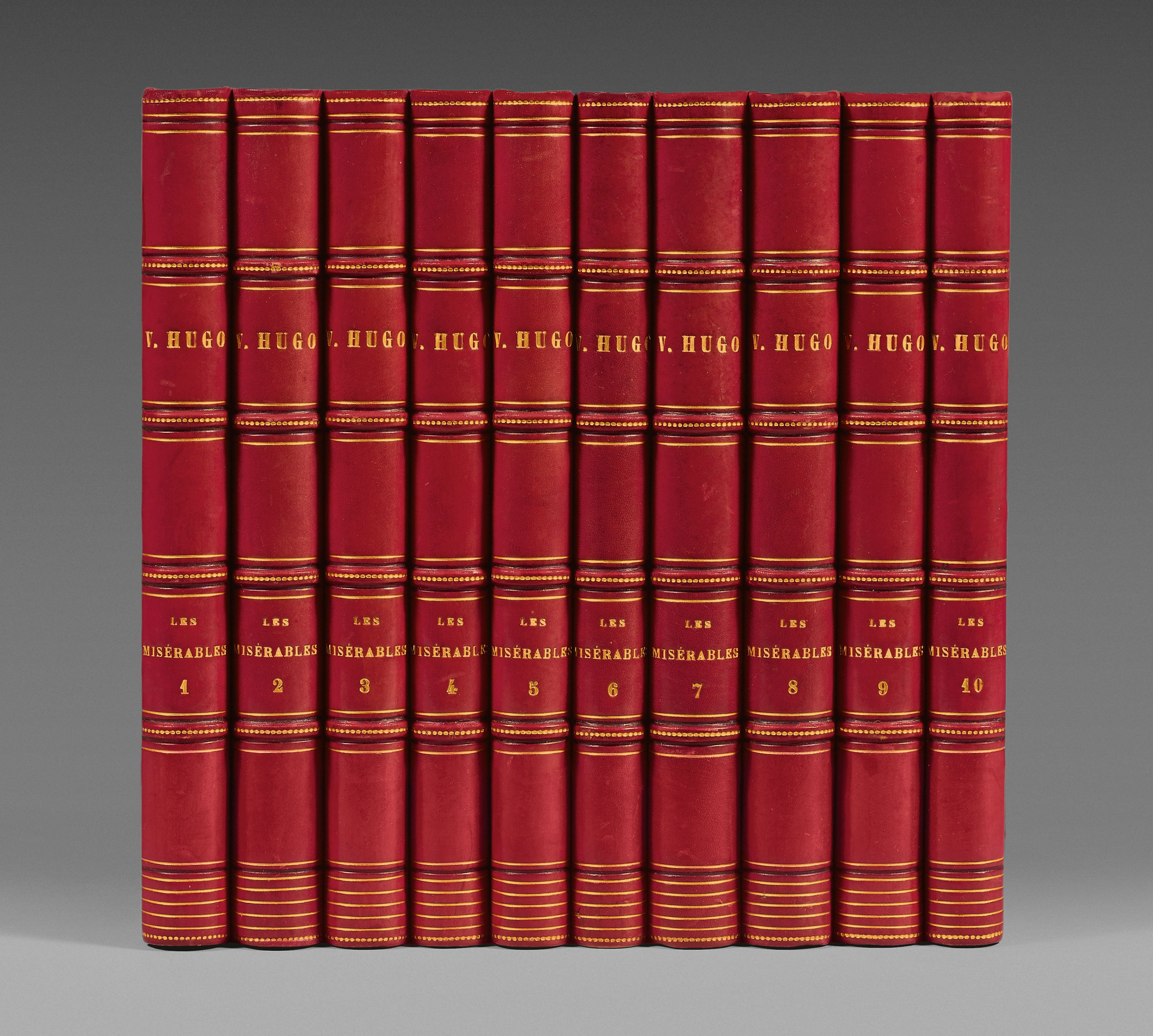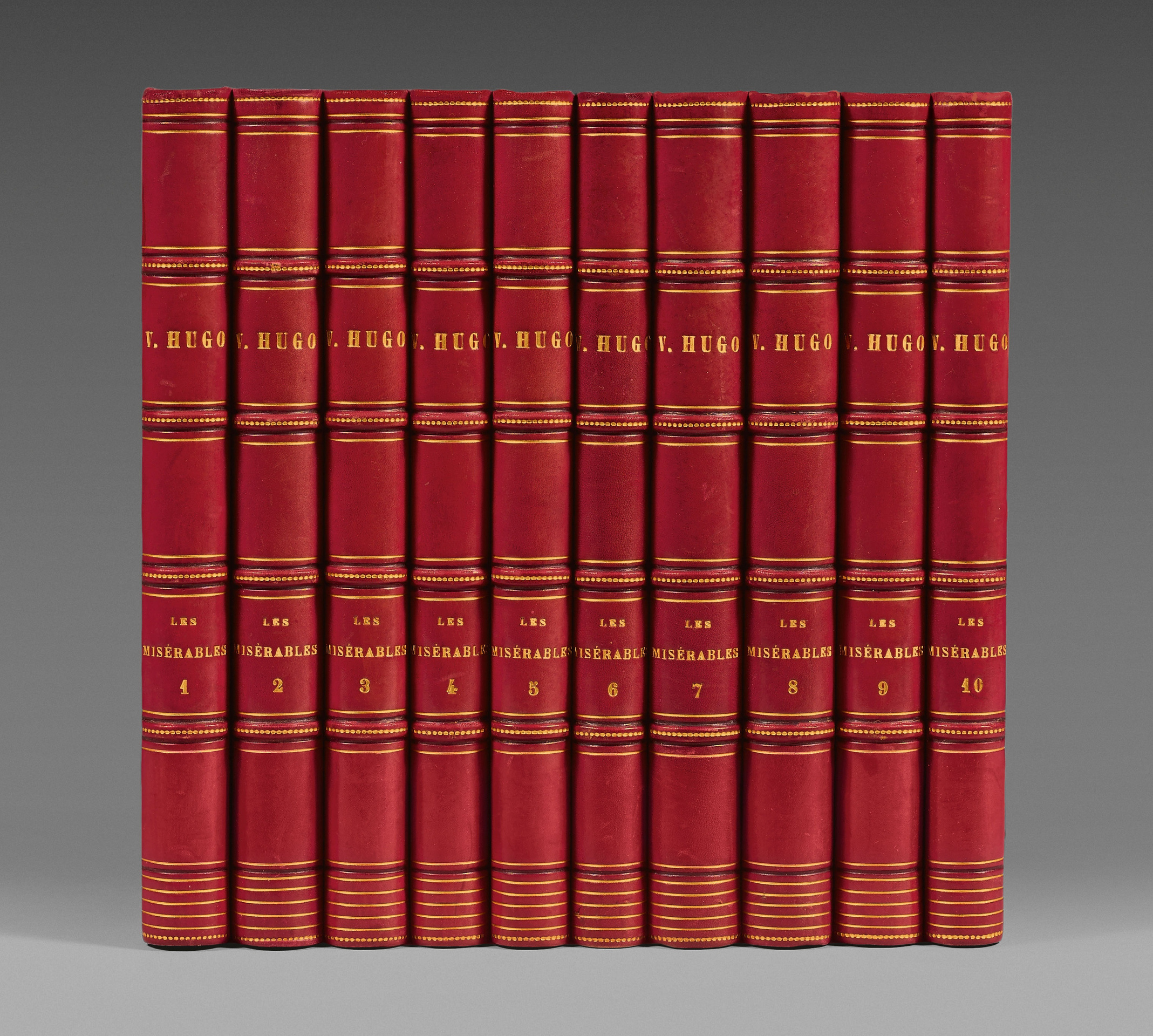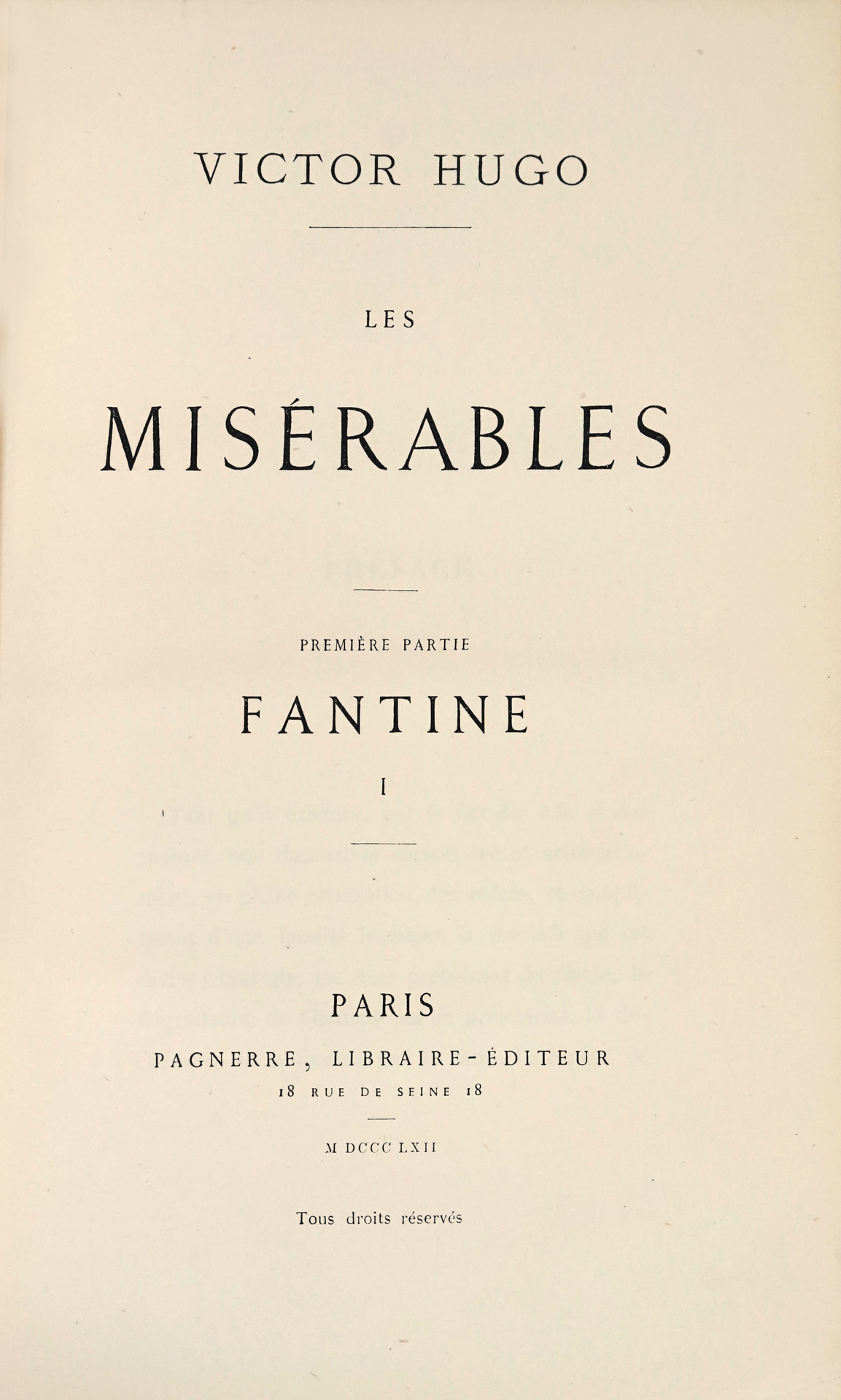Paris, Pagnerre, 1862.
10 volumes 8vo [225 x 144 mm] of : I/ (4) ll., 355 pp.; II/ (2) ll., 382 pp.; III/ (2) ll., 358 pp.; IV/ (2) ll., 318 pp. (1) bl. l.; V/ (2) ll., 320 pp.; VI/ (2) ll., 297 pp., (1) bl. l.; VII/ (2) ll., 432 pp., VIII/ (2) ll., 399 pp.; IX/ (2) ll., 400 pp.; X/ (2) ll., 311 pp. Some mentions of editions on some titles. Red half-calf, spines ribbed and decorated with blind-stamped and gilt fillets, mottled edges. . Contemporary binding.
First French edition of this great novel by Hugo, a vast social indictment, published during the author’s exile in Guernsey.
Clouzot, Guide du bibliophile, 150; Talvart, IX, p.40; Carteret, I, 421.
“A capital and universally esteemed work. One of the most colossal successes of the book trade, it is one of the books that has sold the most; it sells and will continue to sell for a long time.” (Carteret).
Undertaken in 1845, out of a sense of indignation and pity, this generous epic of the people, the fruit of a long elaboration, would not be completed until 1861, during the exile in Guernsey.
Les Misérables went against the grain of the aesthetic choices of the time: a tendency towards ‘impassivity’ and the ‘school of Art for Art’s sake’.
Hugo clearly sets out the mission of his book in the Preface: “As long as there exists, through laws and morals, a social damnation that artificially creates, in the midst of civilisation, hells… as long as there is ignorance and misery on earth, books such nature may not be useless.
The “Miserables” were immediately accepted despite the initial reticence of the critics and the popular success was immense.
Many bibliographers, like Talvart, saw the Pagnerre edition as the true first one. It is now established that the Belgian edition preceded the French edition by a few days.
This novel was the greatest publishing success of the nineteenth century.
A superb copy preserved in its elegant contemporary red half-calf binding.
See less information




